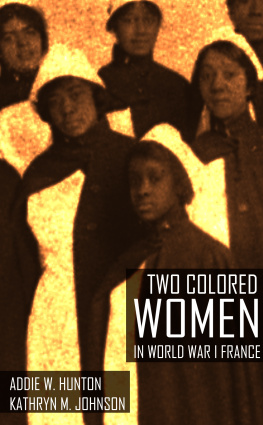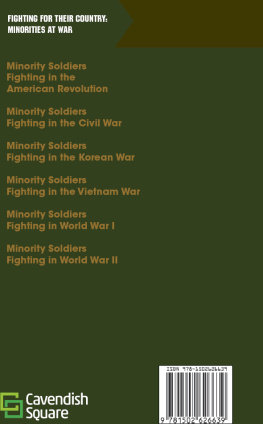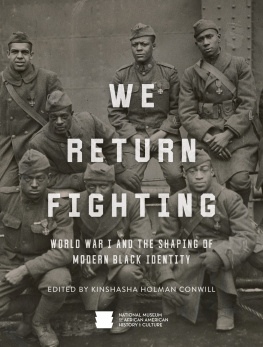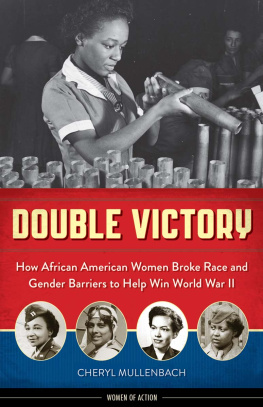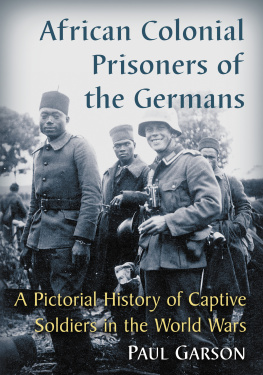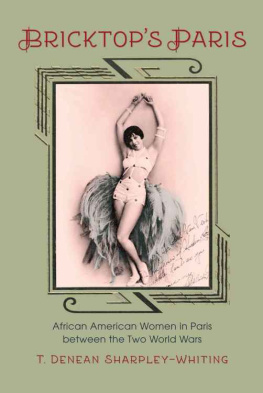
TWO COLORED WOMEN
WITH THE AMERICAN EXPEDITIONARY FORCES
BY
ADDIE W. HUNTON AND
KATHRYN M. JOHNSON
1921
COPYRIGHT 2015 BIG BYTE BOOKS
Discover more lost history from BIG BYTE BOOKS
Get your FREE EBOOK join our mailing list to get notified of great new (old) books and the latest blog posts.
BIG BYTE BOOKS is your source for great lost history!
WHO WERE THEY?
They were two colored Y women, volunteers with the Y.W.C.A. wartime France, serving African-American troops. Very few Americans know anything of the service of African-America troops in the First World War (1914-1918). Fewer know that a large contingent of African-American women served as well with the Red Cross and Y.W.C.A.
Addie Hunton and Kathryn Johnson were the longest-serving women of that contingent overseas, the last hut for the Americans of African descent being closed in Brest by them, on August 3, 1919, nine months after the end of the war.
ADDIE D. WAITES HUNTON
The 1920 federal census states that Addie W. Hunton was born June 11, 1872 in Norfolk, Virginia. She listed her race as mulatto, living as a widowed lodger in the home of Harry and Anna Hairston (also of mixed European-African ancestry) in Brooklyn, New York. They shared the home with the Hairstons two children and two other lodgers, one of them being Addies sixteen-year-old son, William. Her occupation is listed as secretary at the Y.W.C.A. As the census taker had been on their porch the 14 th day of January, 1920, Addie had only been home from France for barely five months.
Addie had been married to William Hunton, a British subject born in Ontario, Canada, who died in November of 1916. Even though she was born in the U.S. and they lived in Brooklyn (William had been there since 1888), Addie held a British passport. In May of 1918 Addie applied for a U.S. passport with the intention of leaving that month for England and France to do Y.M.C.A work ( sic passport application).
Addie had been abroad before. She is listed on a passenger manifest for the SS Nieuw Amsterdam sailing from Rotterdam, the Netherlands, on May 28, 1910. Her nationality is listed as Canadian, although her Last Permanent Residence is listed as Brooklyn in the U.S.A. Her race is listed as African Black, her age as 37 (which matches the birth date above), and her status as a non-immigrant alien is rubber-stamped over a previously hand-written U.S.A. The manifest states she had been visiting a friend named August Organ in Strasbourg, France, and her destination was Brooklyn. Her occupation is listed as housewife, so presumably she was still married to William, though no husband is listed in the manifest.
Two U.S.-born children are listed as traveling with Addie: a ten-year-old daughter named Eunice and a six-month-old son named Charles A. This cant be the same son who ten years later is listed as sixteen in the census. That this is the same Addie Hunton, however, seems quite certain.
After more than a year of service in France in WWI, she and Kathryn Johnson made the ten day sailing together from Boulogne Sur Mer to New York, arriving August 19, 1919 on the SS Noordam . It must have been a depressing and claustrophobic experience to return from cosmopolitan France to Jim Crow America. But it did not keep Addie down.
A February 3, 1923 blurb in The Southern Indicator , an African-American newspaper in South Carolina, states the following about Addie:
Mrs. Matilda Griffinmade some remarks touching the coming of Mrs. Addie W. Hunton to Columbia. She said that Mrs. Hunton was a renowned speaker and deep thinker. She was distinguished in many ways. She has an international reputation as a club woman and Y.W.C.A worker.
In March of 1926, we find Addie traveling to Port au Prince, Haiti, on the ship Panama . United States troops were occupying Haiti at the time and perhaps she was once again helping servicemen.
In 1929, she was off to France again and returned on the SS Rochambeau , sailing September 28 and arriving in New York on October 7.
From 1935 to 1940, Addie lived in the same house in New York, paying $45 per month in rent. She indicates the 4th year of college was her highest level of education and now, being in her late sixties, she listed no occupation and no money earned in 1939. She did, however, list other source of income, so she was not destitute. In keeping with the times, her race was now listed as Negro. Addie Hunton died on June 21, 1943 in Brooklyn.
KATHRYN M. JOHNSON
Kathryn Johnson had never had a passport prior to applying for one in May of 1918. She also listed Y.M.C.A. CANTEEN WORK as her reasons for visiting England and France.
Kathryn was born on December 15, 1878 in Greenville, Ohio. At the time of her passport application, she was teaching and lecturing in Springfield, Illinois. She was nearly 40 years old and still single. Her common name makes Kathryn much more difficult to research and unlike Addie, she becomes obscure after her service in France.
Dedicated to the women of our race, who gave so trustingly and courageously the strongest of their young manhood to suffer and to die for the cause of freedom.
With recognition and thanks to the authors quoted in this volume and to the men of the A. E. F. who have contributed so willingly and largely to the story herein related.
FOREWORD
REMARKABLE achievements are worthy of remarkable acclaim. This justifies our desire to add still another expression to those already written relative to the career of the colored American soldiers in the late World War. The heroic devotion and sacrifice of that career have won appreciative expressions from those who, from a personal point of view, know but little of the details. How much more then should they who walked side by side with those brave men in France realize the merit of their service and chant their praises. Surely they should be best able to interpret sincerely and sympathetically, lovingly and gratefully for our soldiers, as they may not for themselves, something of the vicissitudes through which they passed as members of the American Expeditionary Forces.
We feel, too, that almost fifteen months of continuous service that carried us practically over all parts of France, and afforded a heart to heart touch with thousands of men, is a guarantee of the knowledge and devotion that has inspired this volume.
Memories will ever crowd the mind and cause the eye to kindle with the light of loving sympathy as we recall our months of service at the base of supplies on the coast of France. For there we were privileged to learn something of the life and spirit of the stevedores, labor battalions and engineersmore than 25,000 of them who, through all the desolate days of war, never ceased in their efforts to connect America with Chateau Thierry, Verdun, Sedan, St. Mihiel and other great battle centers of France. There we beheld combat troops, filled with the spirit of adventure arriving fresh from America to follow the trail to the already war-worn front. And there came also those regiments that we called Pioneer Infantries, the imprints of whose deeds of duty and daring are stamped all over France.
We followed our depot companies and engineers through those isolated stretches and wastes where they performed tasks so essential in the plans for victory.
After many months we went away from the confusion of war to beautiful southern France. There we worked to make happy the days of the men who came for rest and recreation to that wonderful Alpine region of Savoie. There in the Leave Area, by the side of shimmering Lake Bourget, we learned something more of the life of our soldiers as they fought or worked on French soil. Every week, for five months or more, a thousand or so men poured into Chambery and Challes-les-Eaux, and we saw in them the gladness or depression of their service.
Next page
